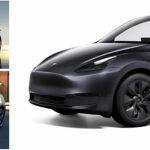Honda’s Commitment to Hybrid Technology
Earlier this year, Nissan made headlines by announcing that it would no longer invest in combustion engines. However, other major Japanese automakers have taken a different approach. Toyota, Subaru, and Mazda recently confirmed their long-term commitment to internal combustion engines (ICE) by investing in new developments. Now, Honda is following suit by focusing on hybrid applications.
In line with reports suggesting a potential merger between Honda and Nissan, Honda is currently working on developing new four-cylinder engines running on the Atkinson cycle. These engines, with displacements of 1.5 and 2.0, are said to be fully redesigned. Honda claims that these new engines will deliver the highest combustion efficiency, surpassing the current hybrid powertrains.
The smaller 1.5-liter engine is expected to extend the RPM range for high efficiency by over 40% compared to the existing hybrid setup. Additionally, Honda plans to reduce weight by making the front drive unit smaller. The new hybrid component will be shared between the “small-size” and “mid-size” systems, utilizing the 1.5 and 2.0 engines respectively, with speculation pointing towards the latter for the upcoming Prelude model.
One notable aspect of Honda’s new engines is their design to achieve a theoretical air-fuel ratio. This approach aligns with Mazda’s recent developments in their Skyactiv-Z engine, focusing on the Lambda One combustion method. The goal is to balance air and fuel perfectly to maximize combustion efficiency and reduce harmful emissions, meeting stringent global emissions regulations.
To complement the new hybrid engines, Honda is also working on a next-generation midsize platform. Future electrified vehicles are projected to reduce fuel consumption by over 10% compared to current hybrids in the segment. This efficiency improvement will be aided by a weight reduction of 90 kilograms and a simplified body structure, trimming down the overall weight of the vehicles.
By sharing components across models, Honda aims to cut production costs for hybrids launching in 2027 by half compared to those introduced in 2018. Some models will feature an electric all-wheel-drive setup, with over 60% of parts shared between vehicles underpinned by the midsize platform. The ultimate goal is to sell 1.3 million hybrids annually by the end of the decade and transition to offering only battery and fuel cell electric vehicles by 2040, aiming for carbon neutrality by 2050.
In conclusion, Honda’s dedication to hybrid technology signals a significant shift towards sustainable mobility solutions, aligning with the industry’s focus on reducing emissions and enhancing fuel efficiency. With a strong commitment to innovation and environmental responsibility, Honda is poised to lead the way in the transition towards a greener automotive future.







